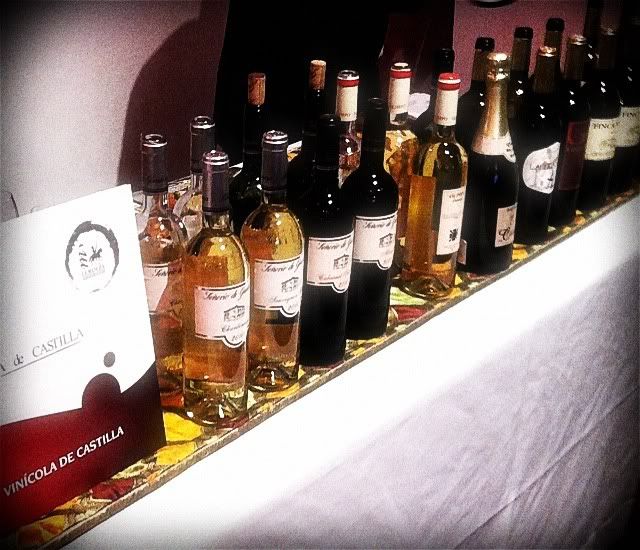Marta is the export manager, an important position for a wine producer which sells 70% of its wine abroad. Marta came to Los Angeles to pour her wines for a few wine scribes like me, Anthony Dias Blue and Brett Anderson. A swingin' night out with that crew may sound like a full-on vacation, (pause for chuckles) but Marta was in work mode. She enjoyed herself, it was clear, but I believe that had less to do with table mates and more to do with the chance to expound on her family's wines.
The Bujanda wines poured at dinner - at Michael's in Santa Monica - were all single-vineyard wines, driven by their respective terroir. From Rioja, there are the Viña Bujanda and the Finca Valpiedra wines, from Rueda comes the Finca Montepedroso line and out of La Mancha are the wines of Finca Antigua.
I got to the restaurant a little early and had the chance to enjoy a drink from Michael's bar. I opened with a barrel-aged Martinez, 47 day. It's gin, sweet vermouth, maraschino, angostura and orange bitters with a lemon twist. It has a lovely cherry red color, and flavors of black cherry, herbs, citrus and vanilla spice. For this cocktail, it should be Christmas.
Here are my impressions of the wines poured during the dinner.
Finca Valpiedra Reserva 2009 - A Tempranillo from Rioja, made by winemaker Lauren Rosillo. It's a Graciano and Maturana blend. Great tannic grip, beautiful fruit, savory notes. This is the steak wine. $40
Cantos de Valpiedra 2013 - 100% Tempranillo from Rioja. Perfumed and delicious. Smooth, with 22 months on oak.
Viña Bujanda Gran Reserva 2010 - 100% Tempranillo from Rioja, fermented in steel and aged 24 months in French and American oak, 39 months in the bottle. Smooth, helluva 30 dollar wine.
Vina Bujanda Crianza 2014 - All Tempranillo from Rioja. It spent a year in American and French oak. Grapes from 20-60 year-old vines. Red fruit and vanilla spice, beautiful with the Bronzini.
Finca Antigua 2013 - Cabernet Sauvignon from La Mancha. $10. Here's where you do a double-take. Response at the table was "Ten buncks? Get out!" Fresh and fruity. Fermented in steel, aged 10 months in new French oak. Great structure.
Finca Antigua 2016 - 100% Viura from old La Mancha vines. Grapefruit nose, flavors of distinct earth and citrus. Very savory white wine. Spent five months on lees.
Finca Montepedroso 2016 - 100% Verdejo from the Rueda vineyard named for its "mountain of stones." Grapefruit and lime, less savory than the Viura, but just a little. 2500-foot elevation vineyard planted in 1980. Five month on lees.
Both whites age well, according to Marta, over 12 years at least. Virua is the better ager, she says, and it even picks up some petrol notes with age.
Follow Randy Fuller on Twitter




 Bodegas La Remediadora
Bodegas La Remediadora I had a couple of opportunities to enjoy
I had a couple of opportunities to enjoy  The wine is dark at the core and ruby red at the edges with a big nose - and I mean a huge nose - of red fruit and leather. It tastes of smoke and dried cherries, plums and blackberries. The tannins are quite mellow and the alcohol level is 13% abv. It has a big, rich taste which was much appreciated on the cross-country flight. It even tasted great in the plastic cup.
The wine is dark at the core and ruby red at the edges with a big nose - and I mean a huge nose - of red fruit and leather. It tastes of smoke and dried cherries, plums and blackberries. The tannins are quite mellow and the alcohol level is 13% abv. It has a big, rich taste which was much appreciated on the cross-country flight. It even tasted great in the plastic cup.